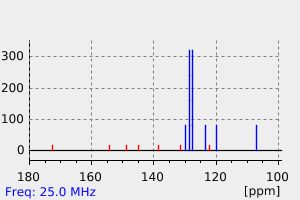Glucuronidation is often recognized as one of the rate-determining factors that limit the bioavailability of flavonols. Hence, design and synthesis of more bioavailable flavonols would benefit from the establishment of predictive models of glucuronidation using kinetic parameters [e.g., K m, V max, intrinsic clearance (CLint) = V max/ K m] derived for flavonols. This article aims to construct position (3-OH)-specific comparative molecular field analysis (CoMFA) models to describe UDP-glucuronosyltransferase (UGT) 1A9-mediated glucuronidation of flavonols, which can be used to design poor UGT1A9 substrates. The kinetics of recombinant UGT1A9-mediated 3-O-glucuronidation of 30 flavonols was characterized, and kinetic parameters ( K m, V max, CLint) were obtained. The observed K m, V max, and CLint values of 3-O-glucuronidation ranged from 0.04 to 0.68 μM, 0.04 to 12.95 nmol/mg/min, and 0.06 to 109.60 ml/mg/min, respectively. To model UGT1A9-mediated glucuronidation, 30 flavonols were split into the training (23 compounds) and test (7 compounds) sets. These flavonols were then aligned by mapping the flavonols to specific common feature pharmacophores, which were used to construct CoMFA models of V max and CLint, respectively. The derived CoMFA models possessed good internal and external consistency and showed statistical significance and substantive predictive abilities ( V max model: q 2 = 0.738, r 2 = 0.976, r pred2 = 0.735; CLint model: q 2 = 0.561, r 2 = 0.938, rpred2 = 0.630). The contour maps derived from CoMFA modeling clearly indicate structural characteristics associated with rapid or slow 3-O-glucuronidation. In conclusion, the approach of coupling CoMFA analysis with a pharmacophore-based structural alignment is viable for constructing a predictive model for regiospecific glucuronidation rates of flavonols by UGT1A9.
葡糖醛酸化通常被认为是限制类
黄酮醇
生物利用度的决定速率的因素之一。因此,利用类
黄酮醇的动力学参数(如 Km、Vmax、内在清除率(CLint)= Vmax/ Km)建立
葡糖醛酸化的预测模型,将有利于设计合成更多
生物可利用的类
黄酮醇。本文旨在构建针对3-OH位点的特定比较分子场分析(CoMFA)模型,描述
UDP-
葡糖醛酸基转移酶(UGT)1A9介导的类
黄酮醇
葡糖醛酸化过程,该模型可用于设计不佳的UGT1A9底物。我们对
重组UGT1A9介导的30种类
黄酮醇的3-O-
葡糖醛酸化动力学进行了表征,并获得了动力学参数(Km、Vmax、CLint)。观察到的3-O-
葡糖醛酸化Km、Vmax和CLint值分别在0.04至0.68 μM、0.04至12.95 nmol/mg/min和0.06至109.60 ml/mg/min之间。为了模拟UGT1A9介导的
葡糖醛酸化,我们将30种类
黄酮醇分为训练集(23个化合物)和测试集(7个化合物)。然后通过将类
黄酮醇映射到特定的共同特征药效团来对齐,从而构建了Vmax和CLint的CoMFA模型。得到的CoMFA模型具有良好的内在和外在一致性,显示出统计学意义和实质性的预测能力(Vmax模型:q2 = 0.738,r2 = 0.976,rpred2 = 0.735;CLint模型:q2 = 0.561,r2 = 0.938,rpred2 = 0.630)。从CoMFA建模得到的轮廓图清晰地表明了与快速或慢速3-O-
葡糖醛酸化相关的结构特征。总之,结合CoMFA分析和基于药效团的结构对齐方法是可行的,可以构建用于UGT1A9介导的类
黄酮醇区域特异性
葡糖醛酸化速率的预测模型。







